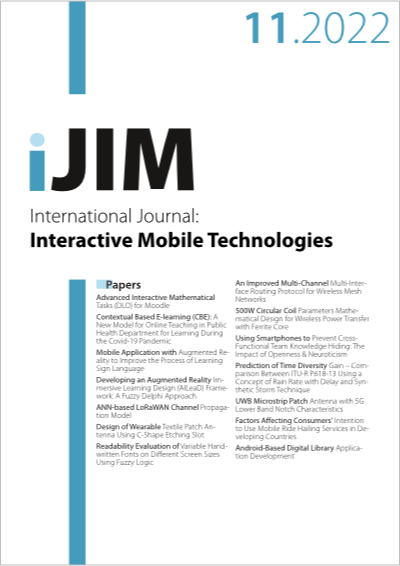Prediction of Time Diversity Gain – Comparison Between ITU-R P.618-13 Using a Concept of Rain Rate with Delay and Synthetic Storm Technique
DOI:
https://doi.org/10.3991/ijim.v16i11.30103Keywords:
Rain rate, Rain attenuation, Synthetic Storm Technique (SST), Time diversity gain, Earth-to-satellite link, ITU-R P.618-13Abstract
Future satellite companies will use higher Ka and V bands. Rain fade is the most important issue in establishing reliable communication between Earth and satellites outside the 10 GHz band. The problem is exacerbated in the tropics by significant rainfall throughout the year. One way to deal with rainfall attenuation is to use a time-diversity strategy. Real-time rainfall attenuation data is needed to analyze time variability. However, data from higher frequency bands such as Ka and V bands cannot be used. As a result, the Synthetic Storm Technique (SST) was proposed to convert the measured real time rainfall data into rainfall attenuation data and predict the time diversity gain. The measured rainfall data was converted to rainfall attenuation data using the traditional SST method. Time diversity gains were predicted using Converted rainfall attenuation and the Matriciani model, and the measurements were significantly overestimated. A new concept of realtime rainfall with and without time delay is proposed and used to predict time diversity gain using ITU-R P. 618-13 and the measured rainfall distribution with delay. Therefore, the proposed method recommends using the measured long-term precipitation data to predict the gain from time diversity at the desired frequency.
Downloads
Published
How to Cite
Issue
Section
License
Copyright (c) 2022 Md Rafiqul Islam, Md Moktarul Alam, M .R. Hasan, Mohamed Hadi Habaebi, Ahmed Basahel, Mandeep Singh

This work is licensed under a Creative Commons Attribution 4.0 International License.



